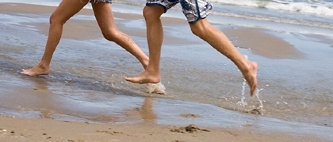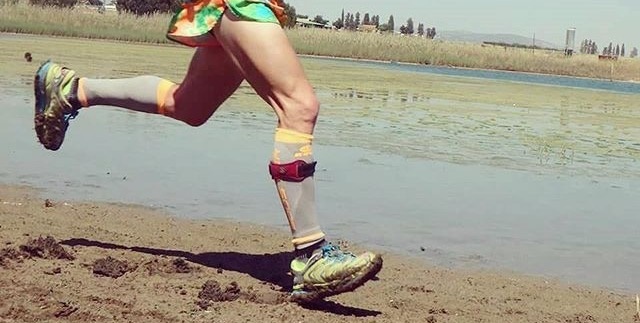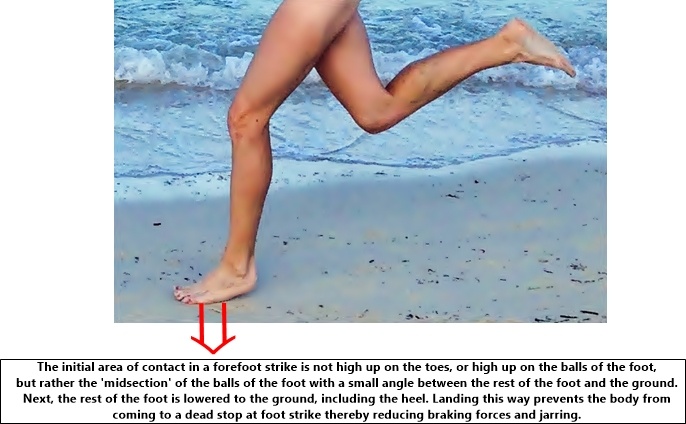There are overwhelming benefits to barefoot running, and making you faster is one of them, whereas traditional running shoes that are heavy was found to slow you down by draining energy from the leg swing phase of running. Also, barefoot running engages a forefoot strike over a heel strike whereby forefoot striking draws more elastic energy from the foot’s arch and Achilles tendon, which is the type of energy to support as many miles as you want to go!

In running, the leg swing phase makes up 20% of the total running economy. According to recent reports, heavily cushioned running shoes are most energetically taxing during this phase of running as compared with barefoot running and running in minimalist running shoes.

The latest research has shown that shod (shoe) runners were 3% more energetically wasteful than runners in minimalist footwear and barefoot runners. Even better, the barefoot runners had a 75% reduction in impact peaks than the shod runners. This is because the barefoot runners landed on the forefoot, not the heel like the shod runners whereby forefoot striking engages the knee differently, enabling it to bend which prevents over-striding and leads to extra energy stored in the Achilles and arch. Also, on the treadmill, barefoot runners were 4% more economical than shod runners, too.
As shown above, the reflexive and neuromuscular responses of the foot and leg in barefoot running are not identical to that of thick cushioned running shoes. Barefoot running engages a forefoot strike coupled with a slightly bent knee at landing. These mechanical outputs ultimately influences the arch and Achilles tendon to operate at the level of better economic sufficiency by freeing up more elastic energy to put to work, which also brings less muscle demands.
The Home Message
Not all running shoes slow you down, just heavier ones will eat into your running economy because the cost of transport during running increases with running speed in a heavier shoe. Ultimately, the more you wear on your feet and the faster you try to run, the more effort is required to lug the extra mass around.
Researchers have also learned that in addition to making you faster, barefoot running works out best for safeguarding your shins, knees, hips and lower back by keeping major aspects of your stride in a safer range! Read more here! about the evidence-based reasons barefoot running will make you run better in shoes!
References:
Hanson et al., Oxygen cost of running barefoot vs running shod. Int J Sports Med, 2011; 32(6):401-6.
Perl, DP., Daoud, AL and Lieberman, DE. Effects of footwear and strike type on running economy. Med Sci Sports Exerc, 2012; 44(7). 1335-43.
Squadrone, R and Gallozzi, C. Biomechanical and physiological comparison of barefoot and two shod conditions in inexperienced barefoot runners. J Sports Med Phys Fitness, 2009; 49(1):6-13.

Bretta Riches
BSc Neurobiology; MSc Biomechanics candidate, ultra minimalist runner & founder of RunForefoot. I was a heel striker, always injured. I was inspired by the great Tirunesh Dibaba to try forefoot running. Now, I'm injury free. This is why I launched Run Forefoot, to advocate the health & performance benefits of forefoot running and to raise awareness on the dangers of heel striking, because the world needs to know.
Latest posts by Bretta Riches (see all)
- Can You Run In Barefoot Shoes? Yes, But DON’T Heel Strike! - 21/07/2024
- Why Cushioned Running Shoes Are Really Bad for Your Feet - 19/07/2024
- Do Cushioned Running Shoes Cause Injuries? - 17/07/2024

